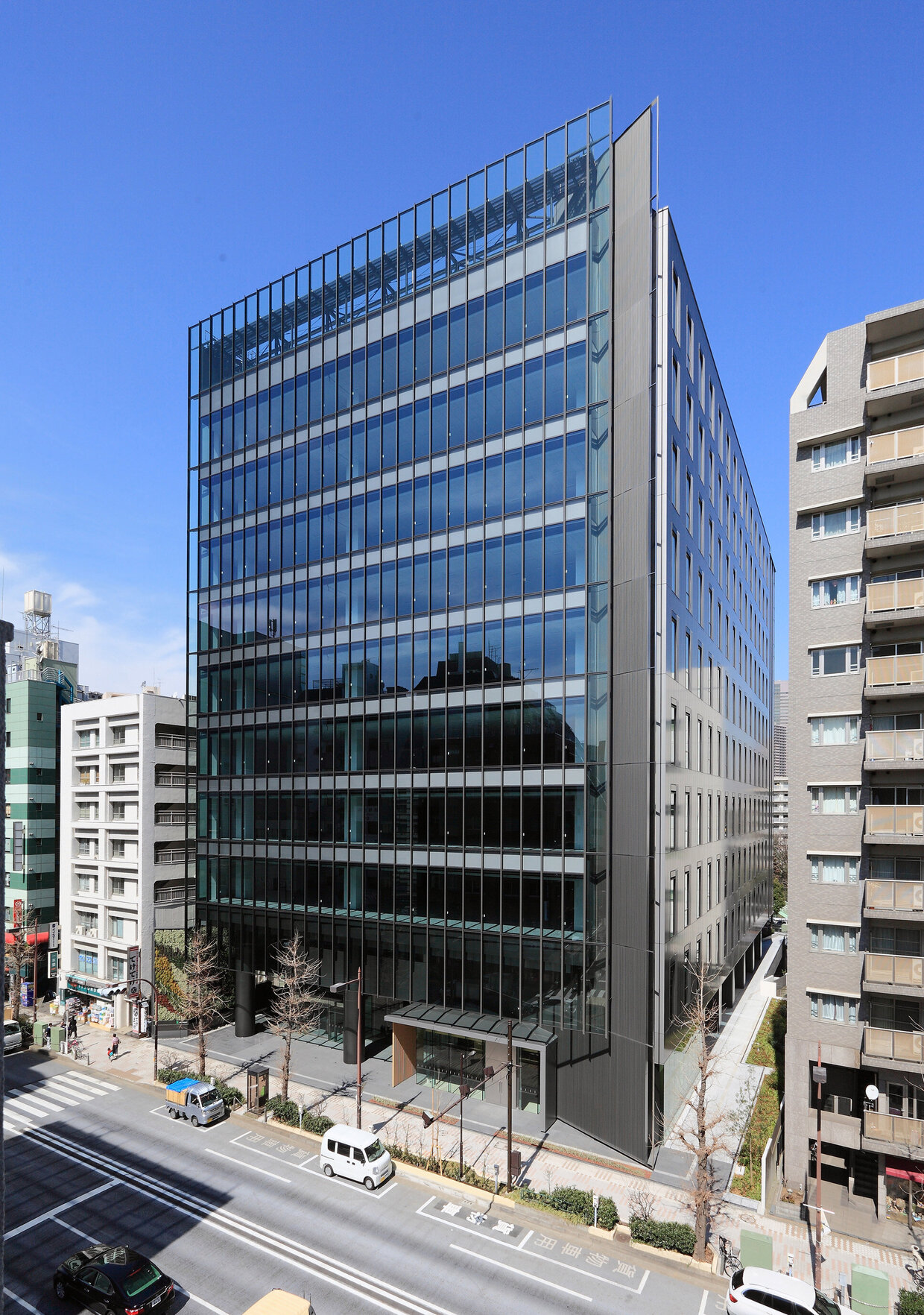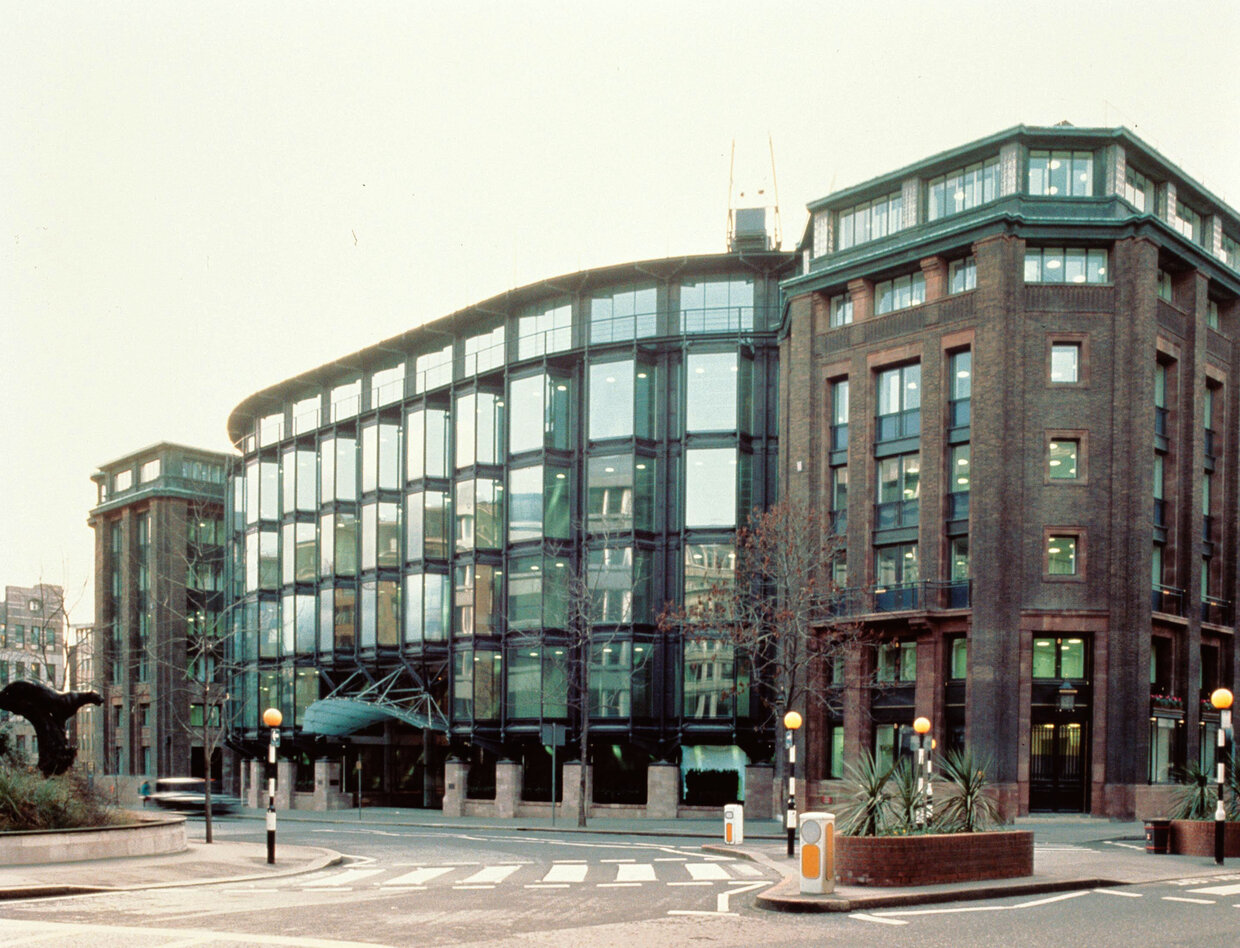Expanding Business Fields (3) Real Estate Development Business
Leasing Portfolio Diversification
Pushes were being made to redevelop urban infrastructure and develop real estate, primarily in the Tokyo metropolitan region. One factor behind this movement was that buildings constructed in Japan’s high growth period were coming up for renewal one after another. Another was that the Olympic and Paralympic Games Tokyo 2020 were on the horizon. Upturn in business related to inbound tourism in Japan led to an urgent need to create internationally competitive cities and develop international business centers. Progress was made toward urban revitalization and redevelopment by way of systems such as National Strategic Special Zones.
In response to these circumstances, leasing market conditions improved and the vacancy rate of office buildings in central Tokyo remained low. This led Obayashi Corporation to proactively push forward with the revenue pillar of the real estate development business, “expanding the office leasing business” and “diversifying the portfolio of properties for lease.” The company sought to generate new leasing business revenue and strengthen its business foundations by investing in income-producing rental offices that can be expected to maintain a competitive edge over the long term, primarily in central Tokyo, and participating in large-scale development projects such as real estate redevelopment and joint real estate development.
In March 2016, the new development project “oak meguro” was completed near Meguro Station. The 10-story oak meguro is a seismic-isolation structure building with energy savings installations such as Low-E pair glass and LED lighting. It also integrates Comprehensive Assessment System for Built Environment Efficiency (CASBEE) certified A-rank equivalent environmentally friendly technologies to enhance amenity. The office building also offered outstanding safety, which supports the business continuity plan (BCP) of residents, by incorporating emergency power generation facilities and double electric power supply lines. Obayashi Corporation was involved in the planning, design, and construction of oak meguro, which is owned and operated by Obayashi-Shinseiwa Real Estate Corporation.

In terms of the overseas real estate development business, the company worked on the renovation of its Bracken House property in London. Bracken House, which is located to the south of St Paul’s Cathedral in central London, was built as the head office of the Financial Times in 1959, and has been designated for preservation as a listed building of historical importance to the United Kingdom.
Obayashi Corporation acquired the building in 1987, and in 1991 replaced the central hall in between the north and south ranges (brick walls sections), which had been left as is. In 2017, for the first time in approximately 25 years, work began on renovating the interior to meet the requirements for modern offices while retaining the original appearance.
Since the completion of the renovation in 2019, the building has been used as the head office of the Financial Times, which had become a subsidiary of Nikkei Inc. The building also houses Nikkei Europe Ltd.

Utilizing Owned Properties
In the real estate development business, the company promoted the leasing business of property other than office buildings by, for example, developing rental housing and logistics facilities on real estate owned by the Obayashi Group and participating in land readjustment projects. When commercializing and monetizing real estate owned by the Obayashi Group in particular, the company committed itself to properly ascertaining the characteristics of the locations and considering whether the real estate could be used as for housing, commercial, or logistics facilities, as well as expanding business fields and its range of variations.
In September 2015, the site of the company’s Nagoya Machinery Factory was put to use with the completion of the Komaki Distribution Center. The company executed the planning, design, and construction of the facility. The building is owned by Obayashi-Shinseiwa Real Estate Corporation and is currently being leased out to a large logistics company.
Additionally, the company generated new sources revenue by effectively using idle real estate among companies in the group as sites for the renewable energy business, such as projects for solar power generation. Difficult-to-use idle real estate was sold off while the company proactively made new investments in rental properties, ensuring steady improvements to its portfolio.
Grand Front Osaka—New Town Planning to Lead Urban Renewal in Kansai
In April 2013, the Grand Front Osaka large mixed-use complex was opened to the public. It was one of the first zones to be developed in the Umekita development area to the north side of JR Osaka station. Since its opening, the complex has exceeded its annual target of 36.5 million visitors every year. In April 2016, when it marked its third anniversary, the number of visitors topped a cumulative total of 150 million.
While the project involved a joint real estate development business led by Mitsubishi Estate Co., Ltd., Obayashi Corporation took part in the project from the early conceptual stages in the roles of developer, architect, and builder. The four high-rise buildings adjoining the Umekita Plaza in front of the station have Knowledge Capital—a platform for intellectual creation and exchange through industry-government-academic partnerships—at their core, and comprise a commercial facility that houses around 270 specialty stores, an international hotel and serviced residences, and cutting-edge offices and premium condominiums.
Around 7 hectares of the approximately 24-hectare Umekita area (in the special urban renaissance emergency development area), which is centered around the former Umeda Freight Station, is designated as an early development zone. Through public-private partnerships, this area has become a hub for the accumulation and exchange of international information and human resources, and has been transformed into the kind of “town” that generates a diverse range of innovation.
Additionally, Grand Front Osaka was chosen for “The Leading Project for Promoting CO2 Reduction in Housing and Building” of the Ministry of Land, Infrastructure, Transport and Tourism. In addition to creating a network of greenery across several blocks, this facility is equipped with cutting-edge environmentally friendly technologies, including a natural ventilation system and solar power generation.
Ahead of the area’s opening to the public, GRAND FRONT OSAKA TMO General Incorporated Association (TMO: Town Management Organization) was established to carry out area management based on the long-term vision. TMO’s action policy is to ensure the sustained growth of the Umeda district as a whole through “creating liveliness,” “forming high quality urban scenery,” and “creating a unique community” via sustained and united neighborhood management through public-private partnerships. Another element of the policy is to raise the added value of the neighborhood by “generating experiences” that spark amazement and exchanges between diverse groups of people. The organization promotes events that communicate new cultural and artistic endeavors, neighborhood community building, and the operation and management of public areas through public-private partnerships. It also encourages participatory urban development that sees residents, commuters, and visitors come together to enrich the neighborhood.